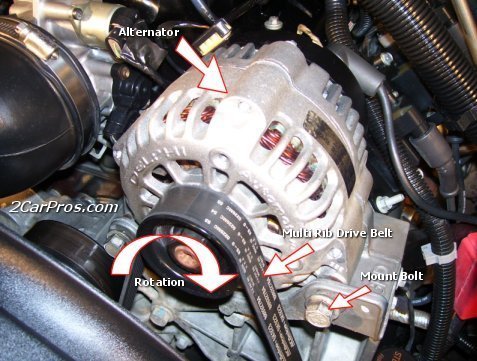An experienced mechanic can tell by the sound if it is a noisy bearing. The buzzing caused by a power steering pump comes from the pressure-relief valve cycling back and forth when under load. The glaring clue is the noise increases when you turn the steering wheel. That causes fluid pressure to increase a lot and it makes the buzzing louder. This is always the first thing we look at because noisy power steering pumps are extremely common on GM front-wheel-drive cars.
Bearings in generators and idler pulleys do not get louder when turning the steering wheel. Their sound changes with changes in engine speed.
The screwdriver trick involves using a long-handled screwdriver with the end of the handle pressed against your ear. Touch the tip to a bolt or housing next to the suspect bearing. It is perfectly normal to hear a little rumbling or roughness, but when you listen next to the noisy bearing, it will be obvious. For the power steering pump, poke the probe on the high-pressure output hose on the back of the pump housing and listen while a helper turns the steering wheel. The high-pressure hose will be brass-colored metal for at least the first four to six inches, then there will be a rubber hose crimped to that. The metal part of that hose is what amplifies the buzzing noise so you can hear it inside the car. The buzzing pressure-relief valve is right in the port that hose is bolted to.
You can also buy a stethoscope from Harbor Freight Tools for $4.00. I use that because it is easier than holding a screwdriver while trying to turn your head to see things.
Thursday, March 29th, 2018 AT 7:41 PM




